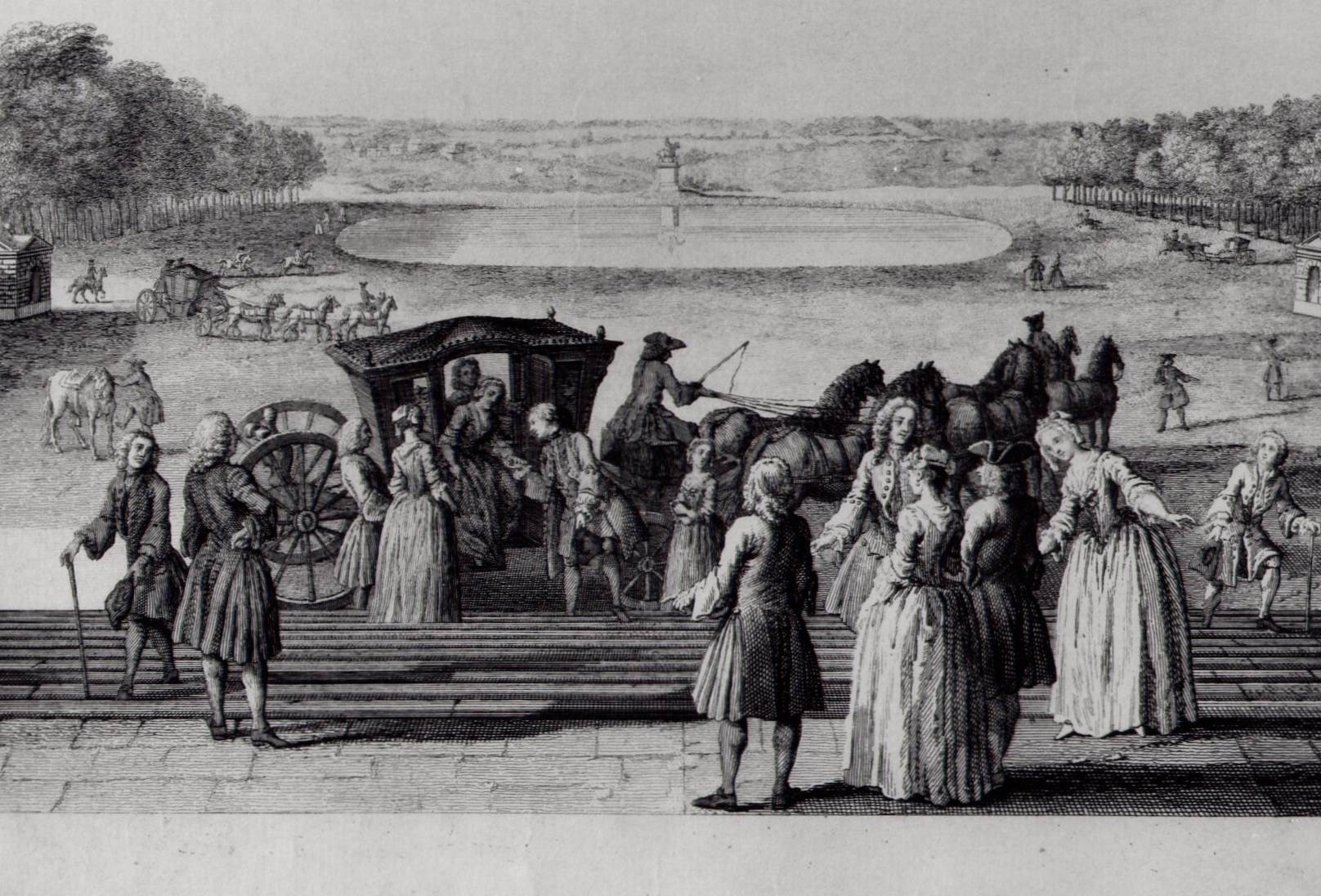Photoshop and Pointing Tourists, Or the Curious Case of Too Many Ideas
5 August 2016

Research Intern Blog
This past week has been filled to bursting with board blasting! I simply have mounds of material to share: historic engravings and illustrations of the estate, some of which even depict tourism around the grounds; accounts of Stowe from visitors' letters, journals, and other publications; historic floorplans of the house and temples from various editions of the Seeley guide; newspaper and magazine clips of announcements and poems about Stowe; as well as correspondence between the Temple-Grenvilles and the Seeley publishers for a new edition of the guidebook in 1814.
Interpretation is key here—choosing a method of sharing the information with various audiences is my current, and quite important, task. What I have concluded so far from the questionnaire results and from talking to both Sophie at National Trust and Anna at Stowe House is that leaflets, a common and simple method of presentation, are just not the most effective or engaging way to go. This conclusion leaves me with still with many, many ideas, but not necessarily a universal, cohesive method of interpretation for historic visitors and tourism at Stowe from New Inn into the house. The idea that I have been playing around with this week is that of a trail of small signs, demarcated by a single logo that would signal to modern-day visitors that they are walking in the footsteps of tourists from 300 years ago.
Enter Jacques Rigaud, who made engravings of Stowe's grounds under Lord Cobham, during the landscape and architectural influence of Charles Bridgeman, John Vanbrugh, William Kent, and James Gibbs (the men who designed the formal Versailles-esque garden with parterre in the 1730s). Rigaud captured Stowe in the midst of activity, with invited guests and curious visitors alike enjoying the estate. Whereas family members and guests are frequently engaging in relaxed social activities (as Lord and Lady Cobham are pictured in the foreground of 'View from the Perterre from the Portico of the House'), visitors are usually depicted as wearing their formal hats and frock coats and wondering at monuments, with appropriate body language and gestures (such as the men in the foreground of 'View from the foot of the Pyramid', who are pointing at the pyramid). It is Rigaud's tourists from 'View of the Great Bason from the Entrance of the Great Walk to the House' who are the inspiration for the historic visitor image that could lead modern visitors around the estate on small signs with interesting facts about the industry of tourism at Stowe or firsthand accounts of their counterparts from 300 years ago. The idea (in my mind) is that tourists of old can speak to the tourists of now. We'll just have to see how practical that idea is in its implementation!
For a wider selection of Stowe engravings by Rigaud, please see the Royal Collection Trust's digital collection at https://www.royalcollection.org.uk/collection/701141/stowe